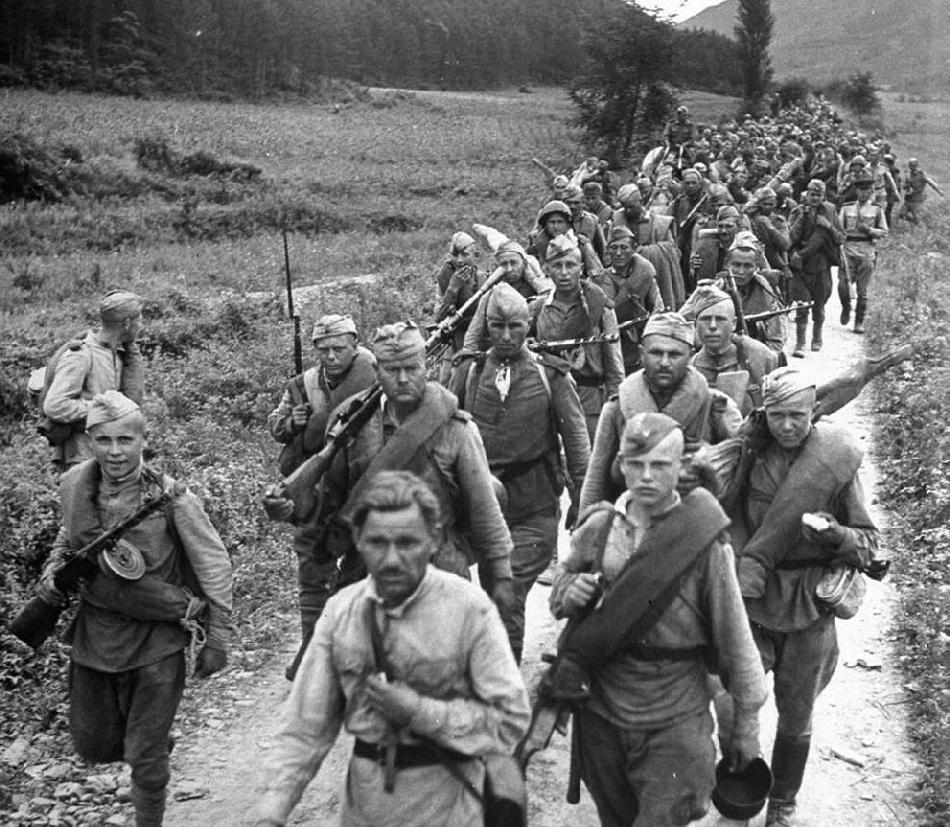
Figure 1.--Here Rdarmy soldiers are on the marchsomewhere in northern Korea, Notice how young some of the soldiers are. The photographas taken a month or so after the War (October 1945) |

|
Liberation for Korea came in the form of two power occpation and would take very different forms dpending on wheter Koreans lived in the north or south. The Soviet declaation of War and invasion of Manchuria (August 8-9) as well as the first signs of imminent Japanese collapse (August 10) dramatically changed U.S. Army planning from a massive opposed amphibious invasion to accepting the surrender of a defeated foe. Planners in the War Department Operations Division began to develop surrender procedures in General Order No. 1 for Gen. MacArthur to transmit to the Japanese Governmentr. The first paragraph of the order specified the nations and commands that were to accept the surrender of Japanese forces throughout the Far East. [McGrath. Korean Conflit, p. 42.] This would also mean who would take posession of the huge stockpiles of Japanese armaments. Within days the first Red Army reached the Koren Peninula which was closer to Soviet Territory than large area of Manchuria. The rapidity with which Japanese forces collapsed in Manchria meant that the Soviets reached Korea first. U.S. troops landed in the south almost precisely 1 month after Soviet troops had entered northern Korea. We do not yet have details on how the occupying forces were received by the Koreans. An important fact about lineration is that the North which the Soviets occupie was the most prosperous area of the contry, with important resources and developed industry. Most of this industrial plant was built by the Japanese after they seized control of Korea (1909). The South which the United Sttes ocupied was th agricultural, less properous area wuth few resources and industrial development. Although the U.S. and Soviet occupations were supposed to be temporary, the division of Korea quickly became permanent as was the case in Germany. One unintended consequence of this is that Korea and German would bcome test cases for the effectiveness of capitalism and communism during the Cold War. As the results were not very succesful for Communism, the two borders became hardend as the Communists atemoted to wall off their failure. Interesting the most drmatic image of North Korea's failure comes from satellite imagery, something the Noth Koreans can not hide. Compre North and South Korea in his night time satellite image. One interesting point is that the South Korean Government was not very democratic at first, but it layed the foundation for today's vibrant South Korea.
McGrath, Lt. Paul C. U.S. Army in the Korean Conflict n.d.. OCMH draft MS.
Navigate the CIH World war II Section:
[Return to Main Korean World War II page]
[Return to Main World War II libertion page]
[About Us]
[Biographies]
[Campaigns]
[Children]
[Countries]
[Deciding factors]
[Diplomacy]
[Geo-political crisis]
[Economics]
[Home front]
[Intelligence]
[POWs]
[Resistance]
[Race]
[Refugees]
[Technology]
[Totalitarian powers]
[Bibliographies]
[Contributions]
[FAQs]
[Images]
[Links]
[Registration]
[Tools]
[Return to Main World War II page]
[Return to Main war essay page]
[Return to CIH Home page]
